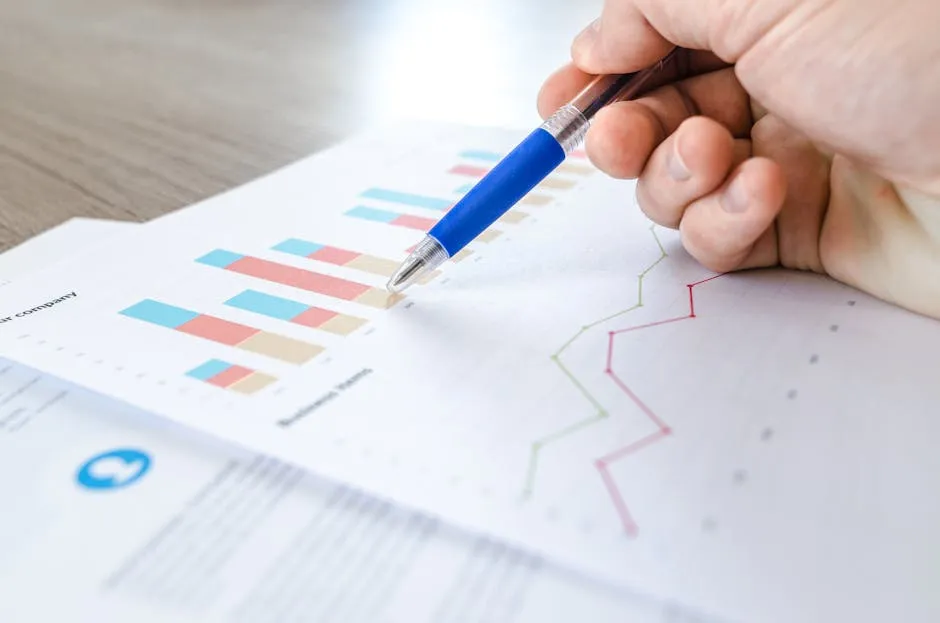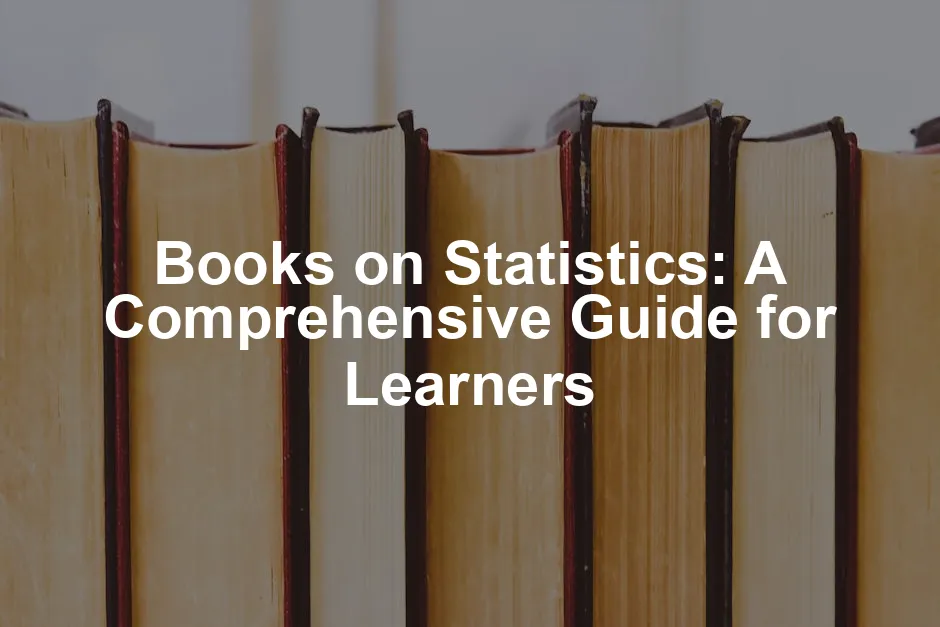Introduction
Statistics plays a pivotal role in our understanding of the world. From social sciences to data science, it informs decisions and shapes theories. Think about it: when you read a news article or a research paper, statistics often provide the backbone of the information. It’s the magic wand that transforms raw data into insights, allowing us to interpret trends and make sense of complex issues.
This article aims to guide you through an exciting selection of books on statistics tailored for learners at various levels. Whether you’re a complete novice or an experienced statistician, there’s something for you. Our curated list not only covers the theoretical aspects but also emphasizes practical applications. Self-study resources will be highlighted, ensuring that you can learn at your own pace and convenience.
Statistics isn’t just about numbers; it’s about storytelling. It’s about weaving data into narratives that help us understand our society, make predictions, and ultimately drive change. So, whether you’re looking to crunch numbers in your job, conduct research, or simply satisfy your curiosity, let’s embark on this literary adventure into the realm of statistics!

Why Learn Statistics?
In today’s data-driven landscape, statistics is more relevant than ever. Every day, we encounter vast amounts of information. Statistical literacy allows us to sift through this data, making informed decisions based on evidence rather than gut feelings. Think about how often businesses rely on market research. They use statistics to gauge consumer behavior and forecast sales, ensuring they stay ahead of the curve.
Statistics also aids scientific research. It provides the tools to test hypotheses, analyze experimental data, and validate findings. Without it, research would be a chaotic jumble of observations with little clarity. Fields like economics and psychology extensively rely on statistics to interpret trends and behaviors. Economists use it to analyze market fluctuations, while psychologists employ statistical methods to understand human behavior and validate theories.
Moreover, statistics enhances critical thinking. It encourages you to question the data presented to you. Why did a particular statistic emerge? What methodology was used to derive it? By developing these skills, you become a more discerning consumer of information.
Consider the world of sports. Coaches and analysts use statistics to evaluate player performance, strategize game plans, and even enhance viewer engagement. The ability to analyze performance data can be the difference between winning and losing.
In healthcare, statistics is vital for understanding the efficacy of treatments and interventions. Clinical trials rely on statistical analysis to determine whether a new drug is effective or if a treatment is safe. It’s a world where numbers save lives.
So, whether you aim to navigate your career, conduct meaningful research, or simply understand the world better, the ability to interpret and analyze statistics is invaluable. Embarking on this journey will not only equip you with essential skills but also empower you to apply them in various real-world contexts.

Types of Statistics Books
When it comes to learning statistics, selecting the right book is as crucial as choosing the right coffee blend. Whether you’re just starting out or looking to deepen your understanding, the right resource can make all the difference. Let’s break this down into two major categories: textbooks for beginners and those for intermediate and advanced learners.
Textbooks for Beginners
Starting with the basics, beginner textbooks introduce fundamental concepts without overwhelming you. Think of them as your friendly neighborhood guide through the often intimidating world of statistics.
One standout title is “Introductory Statistics” by Prem S. Mann. This book is like a warm cup of cocoa on a cold day; it envelops you in clarity. Mann presents statistics in a straightforward manner, making it accessible to all. Concepts such as probability, distributions, and hypothesis testing are covered with practical examples that stick.
Another gem is “Statistics for People Who (Think They) Hate Statistics” by Neil J. Salkind. This title is perfect for those who cringe at the thought of equations. Salkind’s humorous approach makes statistics feel less like a chore and more like a fun puzzle to solve. The book includes real-world applications and relatable anecdotes, ensuring readers not only learn but also enjoy the process.
The importance of clarity and simplicity in these resources cannot be overstated. Beginners need books that explain concepts in a digestible way. These texts should avoid jargon that makes your head spin faster than a tilt-a-whirl. Instead, they should encourage questions, foster curiosity, and provide exercises to reinforce learning.

Intermediate and Advanced Textbooks
As you progress, it’s essential to tackle more complex theories and analyses. Intermediate and advanced textbooks provide deeper insights into statistical methods and their applications.
“Mathematical Statistics and Data Analysis” by John A. Rice is a noteworthy choice. This book dives into advanced statistical theories while maintaining a user-friendly tone. It’s perfect for those who have a solid foundation and want to take their skills to the next level. Rice includes numerous examples and exercises, making it easier to grasp advanced concepts like estimation and testing.
Another classic in this category is “The Elements of Statistical Learning” by Hastie, Tibshirani, and Friedman. This book is like the holy grail for aspiring data scientists. It covers a wide range of topics, including machine learning, and offers a comprehensive overview of statistical learning techniques. The authors present complex ideas with clarity, supported by practical examples that illustrate how to apply these methods in real-world scenarios.
Both these advanced texts assume a background in statistics and mathematics, making them suitable for graduate-level courses or professionals looking to expand their knowledge. They not only teach theory but also encourage practical applications, reinforcing the idea that knowledge is best when applied.
In summary, the world of statistics books is diverse. There’s something for everyone, from budding statisticians to seasoned experts. Picking the right book at the right stage of your learning journey can be your key to unlocking the vast potential of statistical knowledge. So grab a book, a comfy chair, and let the numbers unfold their stories!

Applied Statistics Books
Applied statistics is where theory meets reality. It’s the “how-to” of statistics, answering questions like, “How can I use these numbers in my everyday life?” If you’re looking to make sense of data in practical scenarios, these books are your best pals.
First up, we have “The Art of Statistics: How to Learn from Data” by David Spiegelhalter. This book is like having a wise friend explain statistics over coffee. Spiegelhalter breaks down complex concepts with humor and clarity. He emphasizes the importance of understanding data in context. You’ll learn how to interpret statistics without the math hangover. Each chapter is packed with engaging examples that show you how to apply what you’ve learned.
Next on the list is “Naked Statistics: Stripping the Dread from the Data” by Charles Wheelan. If statistics has always felt like a foreign language, this book is your Rosetta Stone. Wheelan takes a witty approach to demystify the subject. He uses real-world examples to illustrate how statistics shape our understanding of the world. By the end, you’ll feel like a data detective, equipped to tackle numbers with confidence. It’s informative yet entertaining—perfect for the curious minds out there!
These applied statistics books not only educate but also empower you to make informed decisions based on data. They turn daunting numbers into relatable stories, making statistics a breeze instead of a burden.

Specialized and Niche Books
For those who crave a deep dive into specific areas of statistics, specialized books are the treasure troves you need. These texts focus on unique topics, such as Bayesian statistics or statistical learning, catering to readers with a thirst for advanced knowledge.
One standout is “Bayesian Data Analysis” by Andrew Gelman. This book is a staple in the field of Bayesian statistics. Gelman provides a comprehensive guide that balances theory and application. You’ll learn how to think probabilistically and apply Bayesian methods to real-world problems. The clarity of his explanations makes complex ideas accessible, even for those new to the subject.
Another gem is “Statistical Rethinking” by Richard McElreath. This book offers a fresh perspective on statistical modeling. McElreath emphasizes a conceptual approach, encouraging readers to think critically about their analyses. With a focus on practical applications, it’s perfect for those looking to enhance their statistical reasoning skills. You’ll find numerous examples and exercises that guide you through the nuances of statistical thinking.
These specialized texts are invaluable for anyone looking to sharpen their skills in particular areas of statistics. They provide a wealth of knowledge, ensuring that you’re well-equipped to tackle advanced statistical challenges. Whether you’re a budding statistician or a seasoned researcher, these books will elevate your understanding and application of statistics to new heights.

Recommended Statistics Books
Beginner-Friendly Books
1. “Statistics for People Who (Think They) Hate Statistics” by Neil J. Salkind
This book is a delightful introduction to statistics. Salkind uses humor to lighten the load of learning. It focuses on real-world applications, making it perfect for those intimidated by numbers.
2. “Introductory Statistics” by Prem S. Mann
Mann’s book is a classic. It covers key concepts like probability and hypothesis testing with clarity. Each chapter includes practical examples, making it great for beginners looking to grasp the basics.
3. “Naked Statistics: Stripping the Dread from the Data” by Charles Wheelan
This book demystifies statistics. Wheelan breaks down complex ideas into digestible chunks. You’ll find engaging stories and relatable examples, making learning enjoyable.
4. “The Cartoon Guide to Statistics” by Larry Gonick
If you prefer visuals, this is your go-to. Gonick combines illustrations with statistics, making it accessible and fun. It covers fundamental concepts in a light-hearted manner.
5. “How to Lie with Statistics” by Darrell Huff
Huff’s classic highlights the misuse of statistics. It’s not just informative; it’s entertaining. This book is perfect for understanding how to critically assess data presented in everyday life.

Intermediate Level Books
1. “Mathematical Statistics and Data Analysis” by John A. Rice
Rice’s book is an excellent bridge to more advanced topics. It covers essential statistical theories and methods. With numerous examples, it’s suitable for readers with some prior knowledge.
2. “The Elements of Statistical Learning” by Hastie, Tibshirani, and Friedman
This book dives into statistical learning techniques. It’s comprehensive and well-structured, making it ideal for those looking to understand machine learning concepts through a statistical lens.
3. “An Introduction to Statistical Learning: with Applications in R” by Gareth James, Daniela Witten, Trevor Hastie, and Robert Tibshirani
This practical guide focuses on statistical learning techniques. It includes R programming, making it a hands-on experience for readers eager to apply what they learn.
4. “Introductory Statistics” by Illowsky and Dean
This book offers a clear presentation of statistical concepts. It features exercises that guide learners through practical applications, making it a solid choice for self-study.
5. “Probability and Statistical Inference” by Hogg and Tanis
Hogg and Tanis provide a thorough overview of probability and statistics. This book balances theory with practical examples, perfect for anyone ready to deepen their understanding.

Advanced and Specialized Books
1. “Bayesian Data Analysis” by Andrew Gelman
Gelman’s book is a cornerstone in Bayesian statistics. It provides in-depth coverage of the subject. Ideal for readers with a solid foundation, it emphasizes practical applications. Learn more about Bayesian statistics in a fun way.
2. “Statistical Rethinking” by Richard McElreath
This book offers a fresh take on statistical modeling. McElreath focuses on intuitive understanding and practical examples. It’s great for those wanting to enhance their statistical reasoning.
3. “Kendall’s Advanced Theory of Statistics” by Stuart et al.
This comprehensive multi-volume work covers advanced topics in depth. It’s aimed at those familiar with statistical concepts and looking to dive deeper into specialized areas.
4. “The Art of Statistics: How to Learn from Data” by David Spiegelhalter
Spiegelhalter’s book is a thoughtful guide that emphasizes understanding data in context. It’s suitable for advanced learners who wish to appreciate the subtleties of statistical interpretation.
5. “All of Statistics: A Concise Course in Statistical Inference” by Larry Wasserman
Wasserman presents statistical inference in a compact format. It’s designed for those who want a quick yet thorough understanding of modern statistics.
6. “The Elements of Statistical Learning: Data Mining, Inference, and Prediction” by Trevor Hastie, Robert Tibshirani, and Jerome Friedman
This book is a must-read for aspiring data scientists. It explores statistical learning methods and their applications, making it perfect for advanced learners.
7. “The Signal and the Noise: Why So Many Predictions Fail—but Some Don’t” by Nate Silver
Silver analyzes the importance of statistical thinking in predictions. It’s an engaging read for those wanting to understand the application of statistics in real-world scenarios.

Self-Study Resources and Additional Materials
Learning statistics can feel like a mountain to climb. Thankfully, there are numerous online platforms and resources designed to make this journey smoother.
1. OpenIntro Statistics
This is a fantastic free resource. OpenIntro offers an open-access textbook that covers introductory statistics comprehensively. The material is well-structured and includes practical examples and exercises.
2. MOOCs (Massive Open Online Courses)
Platforms like Coursera and edX provide a plethora of statistics courses. You can find offerings from top universities, often for free or at a low cost. These courses include video lectures, quizzes, and peer discussions.
3. Khan Academy
Khan Academy is another excellent option. It offers free courses in statistics and probability. The interactive exercises and video tutorials make learning engaging and effective.
4. Stat Trek
Stat Trek is a user-friendly online resource that covers basic and advanced statistics topics. It includes tutorials, calculators, and practice problems, making it a great supplementary tool for learners.
5. YouTube Channels
Don’t underestimate YouTube! Channels like StatQuest with Josh Starmer break down complex statistical concepts into easy-to-understand videos. It’s a great way to visualize and reinforce learning.
6. Online Forums and Study Groups
Engaging with communities can enhance your learning experience. Platforms like Reddit, Stack Exchange, and various Facebook groups allow you to ask questions and share insights with fellow learners.
7. R and Python Programming
Familiarizing yourself with statistical programming languages like R or Python is crucial. Websites like DataCamp or Codecademy offer interactive courses to help you learn these languages while applying statistical methods.
8. Practice Problems
Many textbooks provide solutions to exercises, which are invaluable for self-study. Books like “Statistical Methods” by Snedecor and Cochran include practical problems that reinforce learning.

By leveraging these resources, you can create a well-rounded self-study program. Remember, consistency is key. Engage with the material regularly, practice problems, and don’t hesitate to seek help when needed. Happy learning!
Tips for Learning Statistics Effectively
Learning statistics can feel like trying to juggle flaming torches while riding a unicycle. But fear not! With the right approach, you can master the art of statistics without getting singed. Here are some practical tips to guide your learning journey:
Set Clear Learning Goals
First things first, set specific and achievable learning goals. Do you want to understand basic concepts? Or are you aiming for advanced statistical methods? Defining your objectives helps you stay focused and motivated. Break down your goals into smaller milestones. Celebrate each achievement, no matter how small. You’ll be surprised how much progress you can make!

Combine Theory with Practice
Theory is important, but don’t forget to practice! Use statistical software like R or Python to apply what you learn. These tools make it easier to visualize data and perform analyses. Start with basic exercises and gradually tackle more complex tasks. Don’t shy away from real-world data sets. Analyzing data from your favorite sports team or social media trends can make learning more enjoyable.

Join Online Communities or Study Groups
Learning statistics doesn’t have to be a solo endeavor. Seek help from online communities or study groups. Platforms like Reddit or specialized forums are great for exchanging ideas. You can ask questions, share insights, and glean from others’ experiences. Plus, discussing concepts with peers can reinforce your understanding. If you have a friend who’s also interested in statistics, consider forming a study group. Two heads are better than one, after all!

Utilize Diverse Learning Resources
Books are fantastic, but they aren’t the only game in town. Explore a variety of resources such as online courses, video tutorials, and podcasts. Websites like Khan Academy and Coursera offer structured courses that can supplement your learning. Mixing up your study materials keeps things fresh and engaging.

Practice, Practice, Practice
Statistics is a skill, and like any skill, it improves with practice. Work on exercises, quizzes, and real-world data analysis projects. Don’t get discouraged by mistakes; they’re part of the learning process. Each error is a stepping stone toward mastery.
Keep a Learning Journal
Document your learning journey. Maintain a journal where you jot down key concepts, formulas, and reflections. This not only reinforces your memory but also serves as a valuable reference for future study sessions. You can even track your progress and identify areas that need more focus.
Stay Curious and Open-Minded
Finally, cultivate a curious mindset. Statistics is a vast field with endless applications. Keep exploring new topics and techniques. Attend webinars, read articles, and follow statistics blogs. Staying informed about current trends in statistics ensures you remain engaged and excited about your learning journey.

By implementing these tips, you’ll find learning statistics can be both rewarding and enjoyable. Embrace the challenges, and remember, every statistician was once a beginner!
Conclusion
Selecting the right statistics books is crucial for your learning journey. With so many options available, it’s important to choose resources that align with your individual goals. Whether you want to grasp the basics or dive deep into advanced topics, there’s a book out there for you.
As you explore the recommended books, remember the importance of consistent study. Create a routine that fits your lifestyle, allowing you to engage with the material regularly. Just like building muscle, the more you practice, the stronger your statistical skills will become.
Remember, learning statistics is not just about crunching numbers. It’s about understanding how to interpret data and apply it to real-world situations. Whether it’s for personal growth or professional development, the ability to analyze and understand statistics is invaluable.
So, grab a book, set your goals, and start your statistical adventure today! Your future self will thank you.
FAQs
What is the best book on statistics for beginners?
For beginners, **Statistics for People Who (Think They) Hate Statistics** by Neil J. Salkind is highly recommended. It presents complex concepts in a humorous and accessible way, making it perfect for those intimidated by the subject. Another great choice is **Introductory Statistics** by Prem S. Mann, which covers essential topics with clarity and practical examples.
How can I study statistics on my own?
Studying statistics independently is entirely feasible. Start by selecting a good textbook that aligns with your current knowledge level. Break concepts into manageable chunks and practice regularly. Use online resources, such as video tutorials and interactive quizzes, to reinforce your understanding. Staying disciplined and consistent is key to effective self-study.
Are there any free resources for learning statistics?
Absolutely! There are plenty of free resources available. Websites like OpenIntro Statistics offer free textbooks, while platforms like Coursera and edX provide free online courses. Khan Academy also has excellent video tutorials covering various statistics topics. You can learn without breaking the bank!
How important is it to understand probability for statistics?
Understanding probability is fundamental to grasping statistics. Probability provides the framework for statistical inference, helping you draw conclusions from data. Many statistical methods, like hypothesis testing and regression analysis, rely heavily on probability concepts. A solid foundation in probability will enhance your statistical skills significantly.
What software should I learn alongside statistics?
Learning statistical software is essential for applying your knowledge. R and Python are two of the most popular programming languages for statistical analysis. They offer powerful libraries and tools that can help you analyze data efficiently. Additionally, familiarizing yourself with Excel can be beneficial, as it’s widely used for data manipulation and visualization.
Please let us know what you think about our content by leaving a comment down below!
Thank you for reading till here 🙂
All images from Pexels




